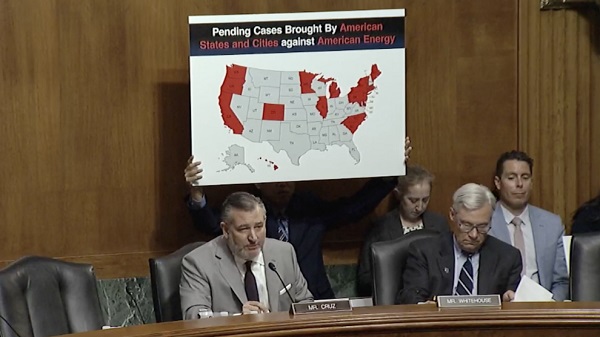Alberta
Different strokes for different folks

Different strokes for different folks.
A day or so before superstars Bryce Harper and Blake Snell told of their reluctance to play an abbreviated 2020 major-league baseball season unless they get all of their multi-million dollar contracts, a young guy in Alberta spent long minutes talking about how much he wants to play.
For 21-year-old pitching prospect Jesse Poniewozik of Spruce Grove, money is no object. These days, when he isn’t working to complete a degree at Okanagan University in Kelowna, B.C., the righthander spends as much time as possible in an empty park, working toward the next chance he gets to climb the ladder toward a successful long-term career.
Like many other young players, this young man has a dream. He discovered baseball as a four-year-old and has been captivated by the sport ever since. It’s extremely easy to pull for Poniewozik. He’s bright, well-spoken and thoughtful.
It’s even easier to pull for him if you know a little about his single season with the Edmonton Prospects and the frightening incident that sidelined him only days before the end of last season.
Those in the seats when a line drive off the bat of a Medicine Hat Mavericks player hit Poniewozik on the head, literally knocking him off the mound. He struggled to his feet and made a brief gesture toward the rolling baseball before going down again. At that point, his mom and dad, Karen and Jim, made their way to the clubhouse and from there to hospital. Almost immediately, they learned that “Jesse had a concussion, a serious one.”
When he was allowed to go home, restrictions were serious: plenty of rest, especially at first; limited physical activity; a responsible diet. Now, months later, the young man sees that difficult time as a positive one.
“I did so much sitting around, you know, that I put on some weight. I had to work a little later to take some of it off.”
As a result of a new routine that lasted a couple of months, his playing weight climbed from about 185 to about 200 pounds, good size for a man who’s six-foot-two. Coincidentally speed on his fastball – the sport’s beloved “velo” – is about four miles per hour better than last year’s best level. Like every young pitcher, Poniewozik realizes the game is easier if you can throw the ball past a rival hitter. “I’m sure I’ll get faster, I’ll be able to stay in the 90s.”
With both the Prospects and his university team inactive because of COVID-19, “Ponie” is happy to look back at some early appearances against U.S. College teams in and around Las Vegas. There, overcoming some understandable nervousness from last year’s injury, he discovered that his improvement from the start to the end of the 2019 season is continuing.
That’s where confidence comes in, something that developed for him as a Prospects. where he opened as an occasional reliever before growing into crucial situations. By season end, his value as a starter was obvious. “At first, I wondered about some things: a lot of good players from big American schools play in our league and I had to find out what I could do.”
Now, he knows he can prosper competitively in the WCBL. One day, he hopes to prosper financially at baseball’s higher levels.
But, first, he just wants to play.
Read more stories on Todayville.
Agriculture
Lacombe meat processor scores $1.2 million dollar provincial tax credit to help expansion

Alberta’s government continues to attract investment and grow the provincial economy.
The province’s inviting and tax-friendly business environment, and abundant agricultural resources, make it one of North America’s best places to do business. In addition, the Agri-Processing Investment Tax Credit helps attract investment that will further diversify Alberta’s agriculture industry.
Beretta Farms is the most recent company to qualify for the tax credit by expanding its existing facility with the potential to significantly increase production capacity. It invested more than $10.9 million in the project that is expected to increase the plant’s processing capacity from 29,583 to 44,688 head of cattle per year. Eleven new employees were hired after the expansion and the company plans to hire ten more. Through the Agri-Processing Investment Tax Credit, Alberta’s government has issued Beretta Farms a tax credit of $1,228,735.
“The Agri-Processing Investment Tax Credit is building on Alberta’s existing competitive advantages for agri-food companies and the primary producers that supply them. This facility expansion will allow Beretta Farms to increase production capacity, which means more Alberta beef across the country, and around the world.”
“This expansion by Beretta Farms is great news for Lacombe and central Alberta. It not only supports local job creation and economic growth but also strengthens Alberta’s global reputation for producing high-quality meat products. I’m proud to see our government supporting agricultural innovation and investment right here in our community.”
The tax credit provides a 12 per cent non-refundable, non-transferable tax credit when businesses invest $10 million or more in a project to build or expand a value-added agri-processing facility in Alberta. The program is open to any food manufacturers and bio processors that add value to commodities like grains or meat or turn agricultural byproducts into new consumer or industrial goods.
Beretta Farms’ facility in Lacombe is a federally registered, European Union-approved harvesting and meat processing facility specializing in the slaughter, processing, packaging and distribution of Canadian and United States cattle and bison meat products to 87 countries worldwide.
“Our recent plant expansion project at our facility in Lacombe has allowed us to increase our processing capacities and add more job opportunities in the central Alberta area. With the support and recognition from the Government of Alberta’s tax credit program, we feel we are in a better position to continue our success and have the confidence to grow our meat brands into the future.”
Alberta’s agri-processing sector is the second-largest manufacturing industry in the province and meat processing plays an important role in the sector, generating millions in annual economic impact and creating thousands of jobs. Alberta continues to be an attractive place for agricultural investment due to its agricultural resources, one of the lowest tax rates in North America, a business-friendly environment and a robust transportation network to connect with international markets.
Quick facts
- Since 2023, there are 16 applicants to the Agri-Processing Investment Tax Credit for projects worth about $1.6 billion total in new investment in Alberta’s agri-processing sector.
- To date, 13 projects have received conditional approval under the program.
- Each applicant must submit progress reports, then apply for a tax credit certificate when the project is complete.
- Beretta Farms has expanded the Lacombe facility by 10,000 square feet to include new warehousing, cooler space and an office building.
- This project has the potential to increase production capacity by 50 per cent, thereby facilitating entry into more European markets.
Related information
Alberta
Alberta Next: Alberta Pension Plan

From Premier Danielle Smith and Alberta.ca/Next
Let’s talk about an Alberta Pension Plan for a minute.
With our young Alberta workforce paying billions more into the CPP each year than our seniors get back in benefits, it’s time to ask whether we stay with the status quo or create our own Alberta Pension Plan that would guarantee as good or better benefits for seniors and lower premiums for workers.
I want to hear your perspective on this idea and please check out the video. Get the facts. Join the conversation.
Visit Alberta.ca/next
-

 Agriculture2 days ago
Agriculture2 days agoCanada’s supply management system is failing consumers
-

 Alberta1 day ago
Alberta1 day agoCOVID mandates protester in Canada released on bail after over 2 years in jail
-

 armed forces23 hours ago
armed forces23 hours agoCanada’s Military Can’t Be Fixed With Cash Alone
-

 Alberta23 hours ago
Alberta23 hours agoAlberta Next: Alberta Pension Plan
-

 Economy2 days ago
Economy2 days agoTrump opens door to Iranian oil exports
-

 International1 day ago
International1 day agoTrump transportation secretary tells governors to remove ‘rainbow crosswalks’
-

 Business1 day ago
Business1 day agoCarney’s spending makes Trudeau look like a cheapskate
-

 Business1 day ago
Business1 day agoCanada’s loyalty to globalism is bleeding our economy dry






